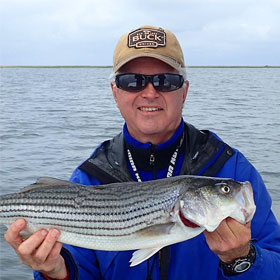How To Locate Places for Boat Access Near Me
By Ken Schultz
Aug 13, 2021
There’s a number of sources with varying levels of detail about boat access places near me; the following information will help you sort them out
If you’re a beginning boater you may have asked friends and other boaters where to find any kind of boat access near me, and especially where to find public boat access near me. Or, as an experienced boater, you may be interested in finding boat access in an area that you are, or will be, visiting on a fishing or family vacation trip.
Here are several ways to go about finding boat access, especially public boat access.
1. START WITH THE COUNTY
Determine what county you’ll be boating in, then visit the website of that county government. Find the Department of Public Works Department and/or the Department of Recreation and look for boat ramps and public access sites. If the county owns a site, it should tell you where and what type of facility it is. A map is often not available here, nor is there likely to be a link to driving directions. Any listing probably won’t include private access sites, such as owned by a marina or local entity that charges a fee.
2. GO TO THE LOCAL TOURISM ASSOCIATION
A local tourism association (and possibly chamber of commerce), is likely to have information about fee and non-fee boat access sites, including those at state and county parks and federal properties. The tourism association is likely to display a map showing where these access sites are, in addition to noting whether they’re free or fee based and whether there are any amenities, such as restrooms.
3. CHECK WITH THE STATE NATURAL RESOURCES AGENCY
Whatever it’s called in your state, the agency that manages fishing and boating activities will have a list, often by county, of what access sites exist. There may or may not be a map on their website, but there should be info about location and type of facility. Their list will not include privately owned and maintained sites.
4. VISIT LOCAL TACKLE AND BOAT DEALERS, AND MARINAS
While they are not likely to have a handout listing local boat access sites, these businesses will know where both free and fee-based sites are located and should have helpful local knowledge, such as the pitch of a ramp, and whether there are any issues of note. Some boat ramps, for example, because of how they’re situated, are problematic in a crosswind or when the tide is running strong. You will not learn that sort of thing from a general website listing. You can also check the TakeMeFishing map to find some access sites, as well as some marinas and tackle dealers.
ABOUT ACCESS TYPES
While I’ve focused on boat access in a general sense, there’s a difference between a launch ramp and a cartop access site. The latter is generally unsuitable for trailered boats, especially if they’re large, and may be undeveloped, meaning that there’s no paved ramp, no bulkhead, and probably no dock for temporary mooring. Kayaks, canoes, and small boats that can be car-topped or toted on small trailers can be carried to the water’s edge at these locations. Make sure you know what type of site you’re headed to if it’s your first visit.
ABOUT PERMITS AND FEES
Be advised that “public” does not necessarily mean “free.” Some “public” access sites are free, some are free to local (i.e. county) residents via an issued permit, and some (such as those at state or county parks) charge a daily or seasonal fee.
Lastly, you did get your boat registered, right?
Editor’s Note: Access to many U. S. waterways is assured through the construction of free public boating ramps (launches), the funding for which comes in part from federal excise taxes on fishing tackle and related items. This is made possible through the congressionally legislated Federal Aid in Sport Fish Restoration Program, which annually disburses tax revenue proportionately back to states based upon the number of anglers in each state. Sites that have been built through this program usually have a prominent sign near the ramp noting this. Program funds are also used for fisheries research, habitat improvement, and angler education projects.









